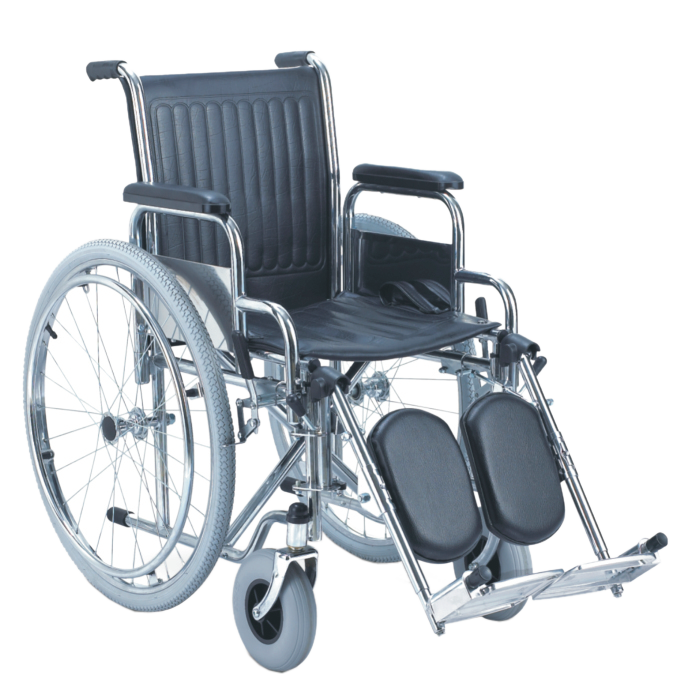Steel Wheelchair – NMW1902C
Chromed steel frame, detachable desk armrest, elevating footrest,
TPR castor, penumatic rear wheel.
Elevating Footrest Wheelchair: Desk armrest steel wheelchair, A really important factor to take into consideration when thinking about the technological development of sports wheelchairs – and wheelchairs generally – is what materials are used. In any design project, choosing a product’s composite materials is crucial. This can dictate anything from the ‘feel’ of the product and the end-user experience to production costs and manufacturing requirements.
Desk Armrest steel wheelchair
Historically, new materials have been introduced to alter various aspects of the wheelchair, but for sports wheelchairs, two aspects reign supreme; weight, and durability/rigidity. This blog post will take a brief look at these changes, as what a wheelchair is made of is just as important as how it is used, or the shape it takes.

Elevating Footrest Wheelchair
The weight factor is pretty straightforward: certain metals are heavier than others. Desk armrest steel wheelchair So, in order to improve performance in sporting wheelchairs, lighter materials need to be identified. Originally, sports played as part of rehabilitation programmes at places like Stoke Mandeville made use of standard clinical wheelchairs – there was no such thing as a sports wheelchair at the time. These wheelchairs were often literal armchairs, like the Travaux, or were made almost entirely of tubular steel, like the Everest and Jennings folding wheelchairs. Accordingly, these wheelchairs were heavy, weighing around 30lbs-40lbs, thus making the practicalities of fast-paced sport more difficult. It should be noted, however, that these wheelchairs were massively improved compared to pre-1930s technology – which often weighed between 70lbs and 110lbs – but more refinement was necessary to arrive at the ultra-lightweight wheelchairs used today. Many have acknowledged the importance of wheelchair sports to the development of ultra-lightweight wheelchairs, primarily due to the work of users who adapted their own equipment as manufacturers granted more importance to the voice of rehabilitation and medical professionals than those actually using the wheelchairs offered by
Nexgenmedical
However, the reduction of weight has an important impact outside of sport as well. As mentioned, modern ultra-lightweight wheelchairs owe their design largely to the sports wheelchair, as methods and materials used here were later evoked for everyday design. This allows wheelchair users more independence and manoeuvrability, something that would not be possible with the heavy, medicalised wheelchairs of 100 years ago. Additionally, the ease with which a material can be formed and shaped is significant when considering that many users customised or built their own chairs. Pre-formed materials like Reynolds biking tubing, for example, provided an advantage to those fabricating their own equipment, Chromed steel wheelchair and explains the popularity of relatively cheaper lightweight materials such as aluminium, when titanium (and now carbon fibre) is considerably more expensive and difficult to
work with.
